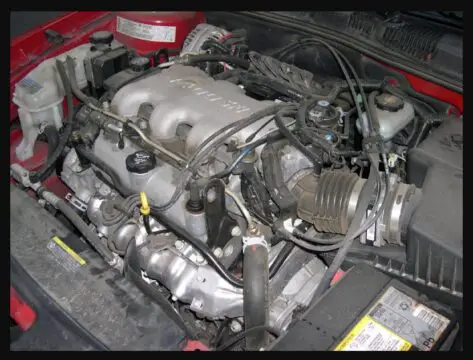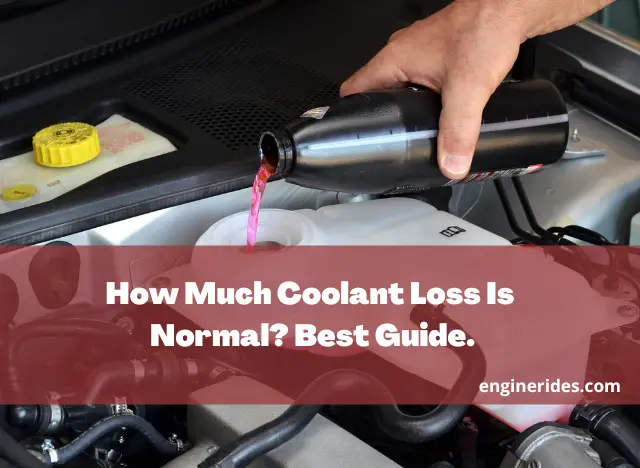Troubleshooting GM’s 3.4L V6 Engine: Exploring Common Problems and Solutions. From performance hiccups to reliability concerns, we delve into the issues that can impact this engine and provide insights into their causes and potential fixes.
Table of Contents
What to know about the GM 3.4L V6 engine?

The GM 3.4L V6 engine holds a significant place in automotive history, known for its widespread use in various General Motors vehicles over the years. Here’s what you need to know about this engine:
1. Origins and Development:
- The 3.4L V6 engine was developed by General Motors and introduced in the mid-1990s.
- It was designed as a successor to the earlier GM 2.8L and 3.1L V6 engines, aiming to improve performance, fuel efficiency, and reliability.
2. Applications:
- The 3.4L V6 engine was utilized in a wide range of GM vehicles, including sedans, minivans, and SUVs.
- Some notable applications of this engine include the Chevrolet Impala, Pontiac Grand Am, Pontiac Aztek, and Buick Rendezvous.
3. Technical Specifications:
- The engine features a 60-degree V6 configuration, with a cast iron block and aluminum cylinder heads.
- It typically has a displacement of 3.4 liters, with variations in horsepower and torque output depending on the specific vehicle application and model year.
- The engine is equipped with sequential multi-port fuel injection (SFI) for precise fuel delivery and optimal performance.
4. Common Issues and Concerns:
- Like any engine, the GM 3.4L V6 has had its share of common issues reported by owners and mechanics.
- One recurring problem is intake manifold gasket failure, which can lead to coolant leaks and engine overheating if not addressed promptly.
- Some vehicles equipped with this engine may also experience issues with the intake manifold itself, particularly in older models.
5. Maintenance and Repair:
- Routine maintenance is crucial for keeping the GM 3.4L V6 engine running smoothly and reliably.
- Regular oil changes, coolant checks, and scheduled tune-ups can help prevent major issues and prolong the engine’s lifespan.
- In the event of a mechanical problem, it’s essential to address it promptly and seek professional assistance from a qualified mechanic or dealership.
6. Overall Performance:
- When properly maintained, the GM 3.4L V6 engine can deliver respectable performance and fuel efficiency for everyday driving.
- It offers a good balance of power and smoothness, making it suitable for a wide range of driving conditions and vehicle applications.
7. Conclusion:
- In summary, the GM 3.4L V6 engine has been a workhorse in the automotive industry, powering numerous GM vehicles with reliable performance and durability.
- While it may have its quirks and common issues, proper maintenance and timely repairs can help ensure years of trouble-free operation from this engine.
Overall, the GM 3.4L V6 engine remains a notable player in the automotive landscape, with a legacy of performance and reliability that continues to endure.
Why Lexus IS 250 Tires Have Different Sizes: Explained Simply
enginerides.com
What are the GM 3.4L V6 engine problems?
The GM 3.4L V6 engine has been known to experience several common problems across various model years and vehicle applications. It’s important to note that the severity and prevalence of these problems can vary based on factors such as maintenance, driving conditions, and the specific generation of the engine. Here are some of the key issues that have been associated with the GM 3.4L V6 engine:
01. Intake Manifold Gasket Leaks
This is one of the most well-known issues with the GM 3.4L V6 engine, particularly in earlier model years. The intake manifold gasket can develop leaks, allowing coolant to mix with the engine oil. If not addressed promptly, this can lead to engine overheating, coolant consumption, and potentially catastrophic engine damage.
02. Dex-Cool Coolant Issues
Some GM vehicles equipped with the 3.4L V6 engine were filled with Dex-Cool, an extended-life coolant. However, Dex-Cool has been associated with issues such as gasket and seal degradation, leading to coolant leaks and potential engine overheating. It’s important to perform regular coolant system maintenance and use the recommended coolant type.
03. Head Gasket Failures
Head gasket failures can occur for various reasons, including overheating from coolant leaks caused by intake manifold gasket problems. A blown head gasket can lead to engine oil and coolant mixing, poor engine performance, and possible engine damage.
04. Timing Chain Issues
Some vehicles equipped with the 3.4L V6 engine experienced timing chain problems. A worn or stretched timing chain can lead to engine misfires, rough running, and potential engine damage if not addressed promptly.
05. Lifter Noise and Oil Consumption
Some owners have reported issues with noisy lifters (valve lifters) and excessive oil consumption. This can lead to decreased engine performance, increased emissions, and potential long-term engine damage.
06. Lower Intake Manifold Gasket Failure
In addition to the upper intake manifold gasket, the lower intake manifold gasket can also develop leaks. This can lead to similar issues as upper intake manifold gasket leaks, such as coolant mixing with engine oil.
07. Rocker Arm and Pushrod Wear
Over time, the rocker arms and pushrods in the valvetrain can wear out, leading to engine noise, decreased performance, and potential valvetrain-related issues.
08. Electrical and Sensor Problems
Like any modern engine, the 3.4L V6 is equipped with various sensors and electronic components. Failures in these components can lead to issues such as poor fuel economy, rough idling, and warning lights on the dashboard.
It’s important to emphasize that not all vehicles with the GM 3.4L V6 engine will experience these problems, and some issues may be more prevalent in certain model years or generations. Regular maintenance, addressing issues promptly, and using recommended fluids can help mitigate some of these problems.
Suppose you’re considering a vehicle with this engine. In that case, it’s advisable to research the specific model year and generation for any known issues and thoroughly inspect the vehicle by a qualified mechanic before purchasing.
GM 3.4 head gasket problems explained
Head gasket problems have been a notable issue associated with the GM 3.4L V6 engine, particularly in certain model years and generations. Head gaskets are crucial components that seal the cylinder head to the engine block and prevent mixing coolant, oil, and combustion gases.
When head gasket issues arise, they can lead to a range of problems and potential engine damage. Here’s what you should know about head gasket problems with the GM 3.4L V6 engine:
1. Causes of Head Gasket Problems:
- Overheating: One common cause of head gasket failure is engine overheating. When an engine overheats, the extreme temperatures can cause the head gasket to warp or develop leaks.
- Poor Gasket Material: In some cases, the original head gasket material used in certain generations of the GM 3.4L V6 engine was not as robust as it should have been, leading to premature failure.
2. Symptoms of Head Gasket Problems:
- Engine Overheating: An increase in engine temperature and frequent overheating can indicate a potential head gasket issue.
- White Smoke from Exhaust: White smoke coming from the exhaust, particularly when the engine is warmed up, could signal coolant leakage into the combustion chamber.
- Milky Oil: A milky or foamy appearance in your engine oil could indicate coolant mixing with the oil due to a head gasket leak.
- Loss of Coolant: If you’re frequently topping off your coolant or notice coolant leaks, it might be a sign of a head gasket problem.
- Poor Engine Performance: A blown head gasket can cause misfires, rough idling, and a decrease in overall engine performance.
3. Repair and Prevention:
- Repairing a blown head gasket typically involves a comprehensive engine disassembly to access the gasket and perform necessary repairs. This can be a labor-intensive and expensive process.
- Regular maintenance, including timely oil changes and proper cooling system maintenance, can help prevent head gasket problems.
- Upgrading to improved head gasket materials during repair or replacement can provide better durability.
It’s important to note that head gasket problems are not exclusive to the GM 3.4L V6 engine and can also occur in other engines. Suppose you’re considering a vehicle with this engine. In that case, it’s advisable to research the specific model year and generation for any prevalent head gasket issues and to have the vehicle inspected by a qualified mechanic before purchasing.
Regular maintenance and prompt attention to symptoms can help prevent severe engine damage associated with head gasket problems.
Is the 3.4 L V6 a good engine?
Whether the GM 3.4L V6 engine is considered “good” depends on several factors, including the specific model year, generation, maintenance history, and your intended use of the vehicle. Here are some considerations to help you assess whether the 3.4L V6 engine is a good choice for your needs:
Advantages:
- Power and Performance: In some iterations, the 3.4L V6 engine can offer reasonable power and performance for its size, making it suitable for daily driving and moderate towing.
- Availability: The engine has been used in various GM vehicles, so replacement parts and expertise for repairs are relatively easy to find.
- Cost: Depending on the specific vehicle you’re looking at, those equipped with the 3.4L V6 engine might be more affordable compared to vehicles with larger or more advanced engines.
- Fuel Efficiency: While not always the most fuel-efficient option in its class, the 3.4L V6 engine can still provide decent fuel economy for a V6 engine.
Considerations:
- Reliability Concerns: The 3.4L V6 engine has been associated with several common issues, such as intake manifold gasket leaks, coolant problems, and timing chain issues. However, the severity and prevalence of these issues can vary depending on the model year and generation.
- Maintenance: Regular and diligent maintenance is key to preventing or addressing some of the common problems associated with this engine. Neglecting maintenance can lead to more serious and costly issues down the line.
- Age and Wear: Many vehicles equipped with the 3.4L V6 engine are older, which can mean more wear and tear on various components. This could potentially lead to increased maintenance needs.
- Performance and Towing: While the engine can handle daily driving and light towing tasks, it might not be the best choice for heavy or high-performance demands.
- Resale Value: Due to the reputation for reliability issues, vehicles with the 3.4L V6 engine might have lower resale values compared to more dependable alternatives.
The GM 3.4L V6 engine can be a decent choice for certain applications, especially if you’re looking for a budget-friendly vehicle for daily commuting or light-duty tasks. However, due diligence is essential. Before purchasing a vehicle with this engine, research the specific model year and generation, review its maintenance history, and consider having a qualified mechanic inspect the vehicle to ensure that any potential issues have been addressed.
If reliability and long-term peace of mind are major factors for you, you should explore other engine options or vehicle models known for better reliability records.
Also Watch ; Top 5 Problems Chevy Equinox SUV 1st Generation 2005-09







2 Comments